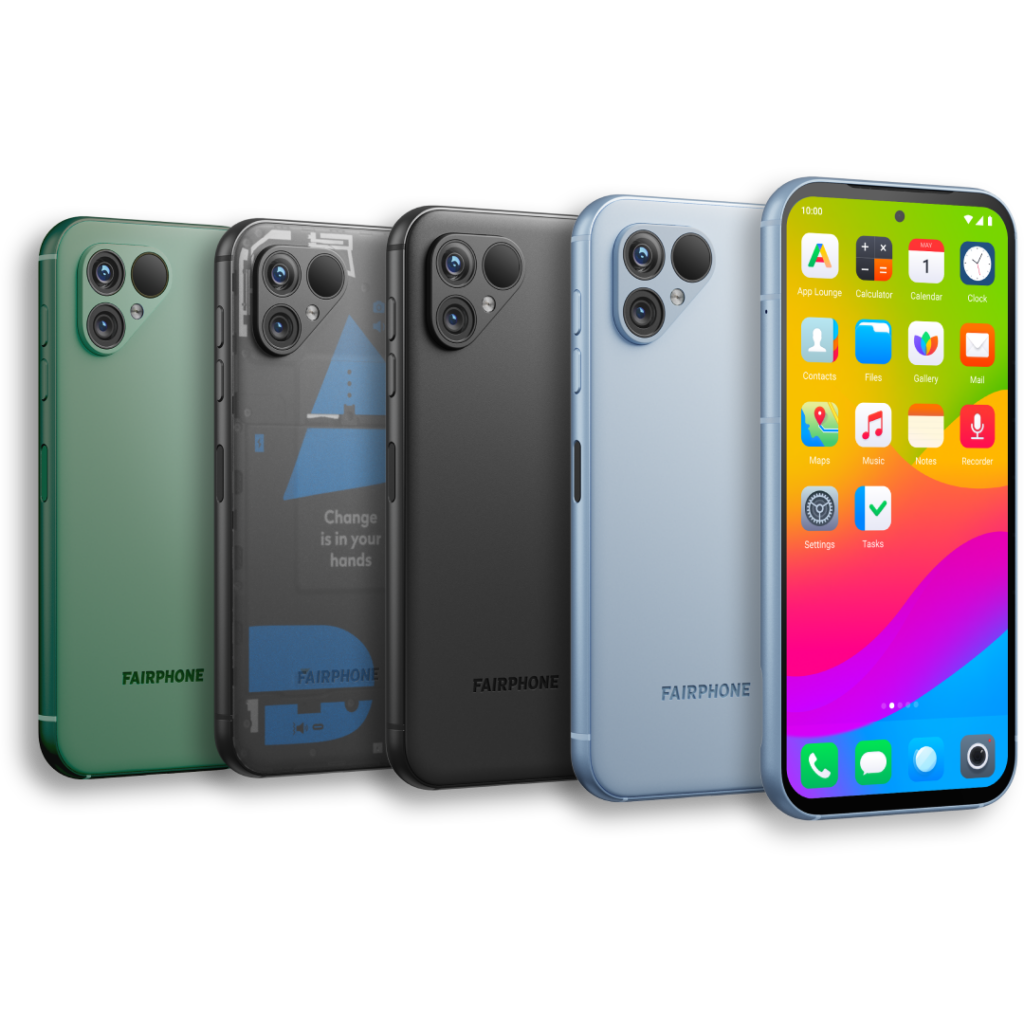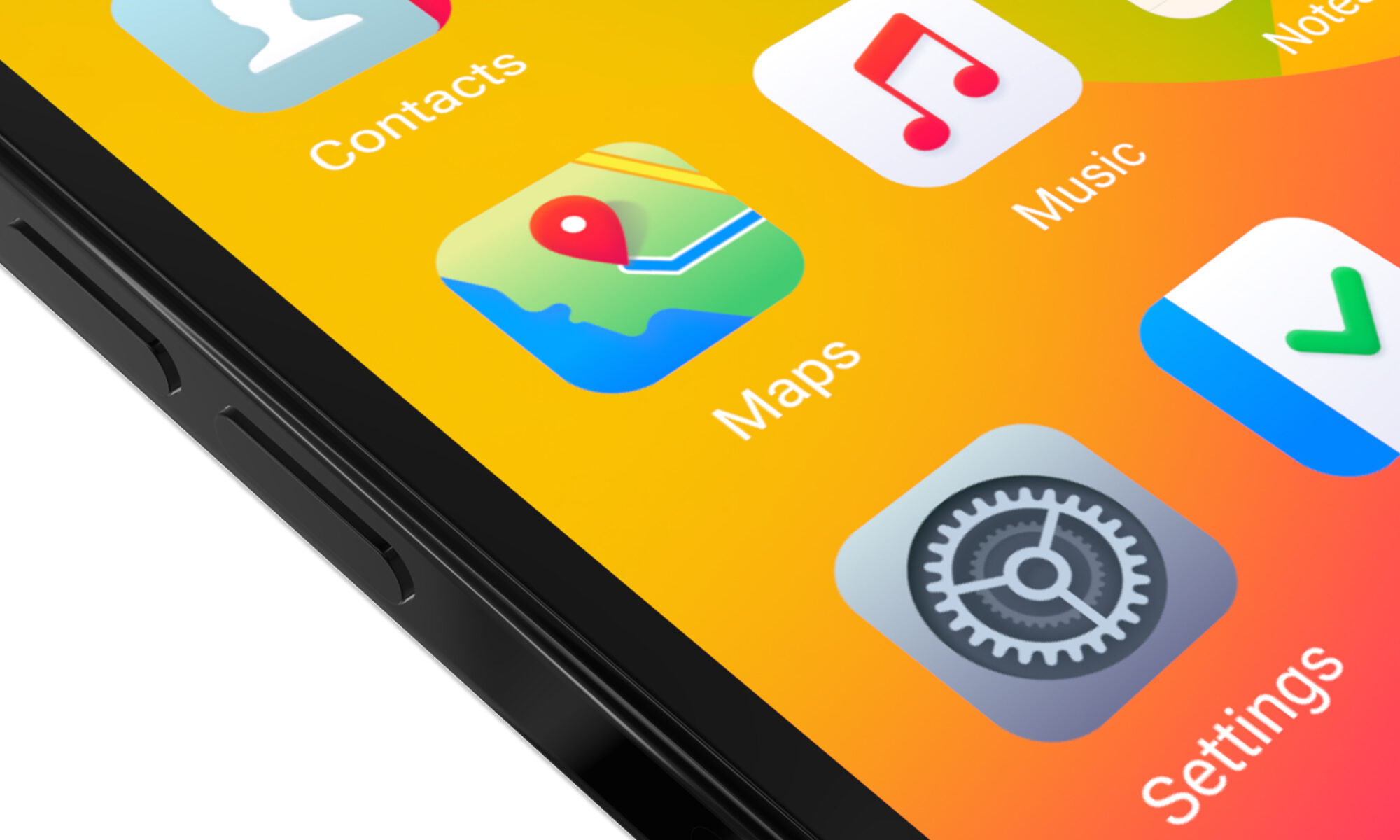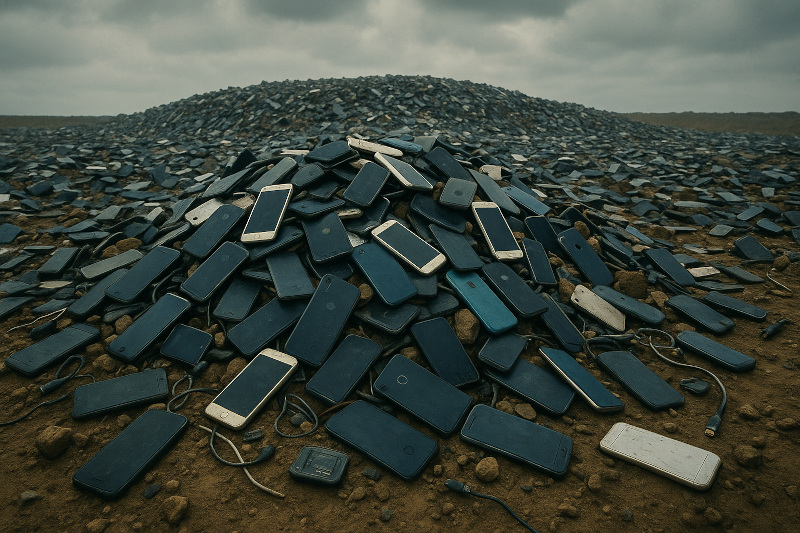What’s a smartphone in today’s world ? It’s the object in everyone’s pocket that gets thrown away in 2.7 years lifespan. It’s a little bit more for an iPhone but that’s the industry average. And as everyone already strolls around with it glued to their hands, increasing the number of sales for this product, could mean making sure that the number of 2.7 stays low. Or even lower. Either because the newer version is more appealing and shinier or because of obsolescence and degradation of quality.
Extending the lifespan of smartphones — or any technological device — effectively reduces product demand and, in turn, sales. However, since 80% of a smartphone’s energy consumption occurs during manufacturing, this also significantly lowers its environmental impact, potentially cutting it in half or more.
There is a huge stake in how long people keep their electronic devices and how often they go for the upgrade. While it’s not good for the environment, the incentive is that people replace their device at an even faster rate.
Your phone is not dying, the OS is rendering it obsolete
The phone becoming sluggish, lack of ecosystem integration and software support … These common reasons for replacing your phones are not from hardware failure. Your phone works fine until the security patches dry up, the OS won’t update, the critical apps are not available.
Planned obsolescence designed as progress and upgrade. Tech companies have created a system where the control of the upgrade cycle gives them control of your device stability. Buy an Apple, buy a Samsung, you know that in a few years, software updates are going to stop coming. It’s already in the public’s mind: 3 years is an old phone.
It also comes down to how software is used to limit the control you have on the hardware. One of the biggest reason for changing your phone is still the battery, no matter the phone. It is the component that deteriorates the most. A natural process but manufacturers have deliberately designed smartphones to be sealed shut, using among other ways, software locks. You can’t simply replace the battery — you’re forced to replace the entire device or go to them.
Make no mistakes, it’s not just a flaw.
Take Apple’s case with the Batterygate.
In 2016, when users and different parties began to notice Iphones slowness, instability, and unexpected shutdown after specific software updates, a pattern was quickly revealed. A pattern of product degradation on older phones like the iPhone 6 and 7. Apple responded by acknowledging the issue and justifying it as a way of preserving the battery life.
But if your phone slows down to unusability, and you’re not told why, you replace it. Instead of empowering users with the simple choice of replacing the battery and keeping your phone, they buried the slowdown in an update and offered no transparency. It resulted in millions of people affected and a lot of them thinking their devices were dying and therefore, buying new ones.
Their cynicism ended up costing them a lot because years later, Apple settled for a fine of 113 million american dollars and was forced to issue transparency documents about the throttling of their devices’ performance because they made the choice for the users.
But it’s yours to keep
You paid for it, so you should decide when it’s time to move on — not the tech companies. Why should their need to sell you a new device really override your right to keep the one you already own ? When software dictates when your device “expires,” what you really lose is ownership. That shiny smartphone in your hand doesn’t belong to you anymore — it belongs to the business model of whoever made it.
Longevity is Resistance
The name of the game becomes; whose interests are being served and prioritized? Shareholders values or environment and consumer satisfaction?
Obviously there is an imbalance in how those interests are being served, the balance tipping in one clear direction. But as consumers, there is a way to skew the direction in the other, by making your voice heard. Every extra year you hold onto your smartphone or laptop is one more year you refuse to play by their rules.
A five-year-old smartphone still makes calls. It still sends messages. It still accesses the web. The only reason it feels outdated is because the software was designed to make it feel that way.
That’s why longevity is resistance.
It’s resistance against waste. Against manipulation. Against a business model that relies on disposability and disguises it as innovation.
Keeping your tech running longer is a powerful way to vote with your device. And the more people who choose durability over disposability, the louder that vote becomes.
Different approaches, with more coming
Thankfully, some companies work to align themselves with user and public interests and view their product as investments for their customers.
Pixii’s cameras are built with the future in mind — offering long-term support by creating local jobs, modular upgrades, and freedom from the endless cycle of yearly releases.

Supernote, an eInk Android device manufacturer, has been selling batteries and spare parts and made sure to make those easily replaceable.
And in 2027, a new law will take effect across Europe: portable batteries must be removable and replaceable by the user.
Murena’s work with Fairphone
Fairphone isn’t just another smartphone. It’s an act of defiance. Built to be repairable, designed to last, and committed to ethical sourcing. But more than that — it’s a symbol of a different way of thinking about tech.
Murena is proud to partner with Fairphone to provide a deGoogled, privacy-first phone that keeps your device useful for the long haul. The combination of /e/OS software and Fairphone hardware is built on one principle: you should control your tech — not the other way around.

Change your perspective!
By being aware of how the software impacts the durability of the device in your hand, you can now spot when planned obsolescence is being disguised as upgrade and improvements. Obsolescence engineered directly into the OS and the software. Some low cost manufacturers stop producing updates after a few months.
Do you need the latest features? do you need an up to date web browser? do you need up to date security patches? do you need to run apps? Buy the new phone.
The first step, as always, is awareness. To understand that the solution already stands in your hands. You bought the device. You should decide when it stops serving you — not Apple, not Google, not Silicon Valley. By cutting support early, tech giants are actively pushing millions of perfectly functioning devices into landfills which results in a tidal wave of waste, massive environmental damage, and the public that thinks they “need” a new phone every two or three years.
Because this isn’t just about tech — it’s about control. It’s about our environment. It’s about freedom. And the more you hold on to what you own, the less power they have to take something from you. It’s time to reject built-in obsolescence. It’s time to demand software that respects your hardware — and your choices.
Let’s get back to responsible practices — and take back control of our devices and our future.
— Gaël Duval, CEO and Founder of Murena and e Foundation.
Follow me on Mastodon @gael@mastodon.social — also on some other social networks.
Image attributions:
- illustration picture by GPT4 and Gaël Duval
- other pictures by Gaël Duval

